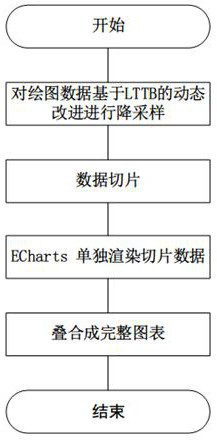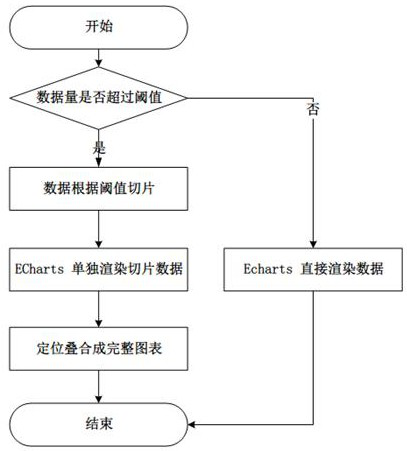Mass data drawing optimization method based on maximum triangle three-segment algorithm
A technology of mass data and optimization methods, applied in the field of data visualization, can solve the problems of no fixed value, unfavorable data analysis and visualization effect display, and imprecise threshold selection, etc., to achieve the effect of reducing data points and high-performance visual drawing
- Summary
- Abstract
- Description
- Claims
- Application Information
AI Technical Summary
Problems solved by technology
Method used
Image
Examples
Embodiment Construction
[0027] In order to make the technical solution of the present invention clearer, it will be described in detail in conjunction with the accompanying drawings. The present invention is as follows: figure 1 As shown, the specific steps are as follows:
[0028] Step S1. Obtain the collected data, and perform down-sampling based on the Large Triangle Three Buckets (LTTB) algorithm and its dynamic improvement algorithm. The steps of the LTTB algorithm are as follows:
[0029] S1-1. Determine the segment size threshold: In order to facilitate changing the segment size, pass the segment size as a parameter (threshold) to the algorithm, so if you need to sample 100 times, you only need to pass the parameter threshold=(total data size / multiple ). The total data points are equally divided into all the segments, which are divided into the threshold segment. In addition, in order to ensure that the first and last points can be selected after the data is divided, the first and last poin...
PUM
 Login to View More
Login to View More Abstract
Description
Claims
Application Information
 Login to View More
Login to View More - R&D Engineer
- R&D Manager
- IP Professional
- Industry Leading Data Capabilities
- Powerful AI technology
- Patent DNA Extraction
Browse by: Latest US Patents, China's latest patents, Technical Efficacy Thesaurus, Application Domain, Technology Topic, Popular Technical Reports.
© 2024 PatSnap. All rights reserved.Legal|Privacy policy|Modern Slavery Act Transparency Statement|Sitemap|About US| Contact US: help@patsnap.com










